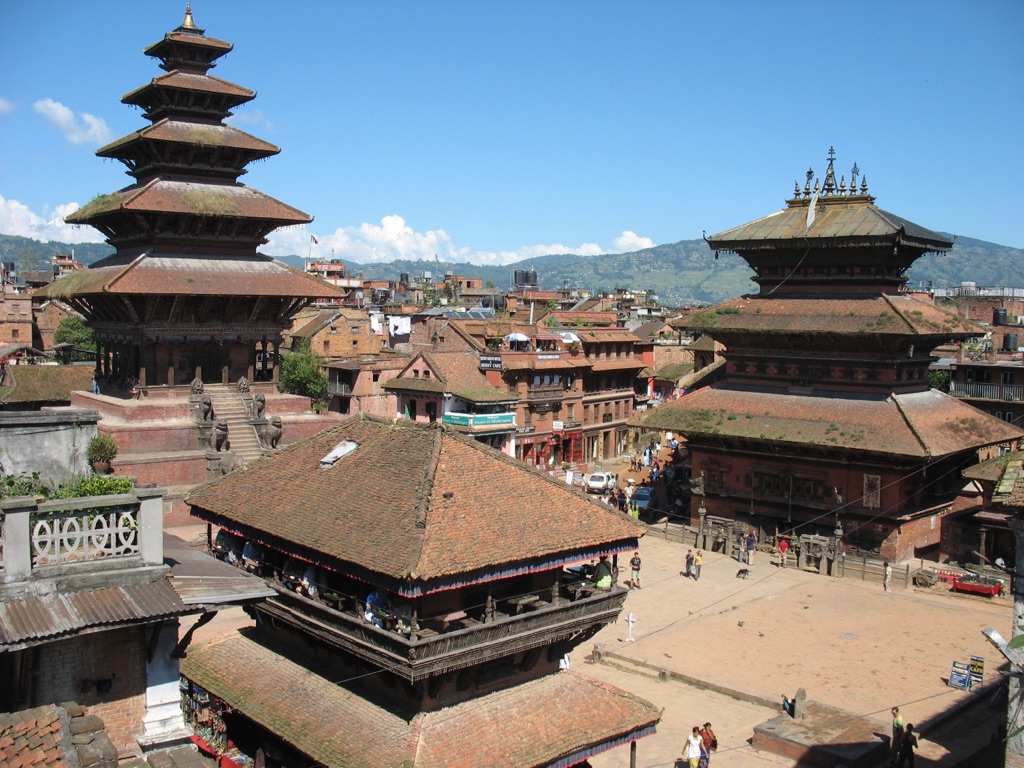Bhaktapur Taumadhi Square, nestled in the heart of Bhaktapur, Nepal, is a living museum of Newari culture. This ancient plaza brims with historical significance and architectural marvels. It is part of the Bhaktapur Durbar Square, a UNESCO World Heritage Site. The square is renowned for its towering temples that stand as a testament to the city’s religious devotion and artistic heritage. Among these is the majestic Nyatapola Temple, which dominates the skyline. The square is not just a tourist attraction but a place where daily life, cultural festivities, and religious rituals intertwine, preserving the essence of medieval Nepal.
Get your dose of History via Email
Historical Background of Bhaktapur Taumadhi Square
Bhaktapur Taumadhi Square’s history dates back to the 12th century. King Bhupatindra Malla, who reigned in the 17th century, is credited with much of the square’s current architecture. The square has been a bustling hub of activity for centuries. It has witnessed numerous historical events, including royal processions and public gatherings. The Nyatapola Temple, built in 1702, is the square’s centerpiece and is the tallest temple in Nepal. The square has survived earthquakes, most notably in 1934 and 2015, and has been restored to its former glory.
The discovery of Bhaktapur Taumadhi Square was not a singular event but a gradual recognition of its historical value. Local inhabitants have always known of its significance. However, it gained international attention when Bhaktapur Durbar Square was declared a UNESCO World Heritage Site in 1979. The square’s temples and buildings were constructed by Newari artisans, known for their exquisite craftsmanship. The square has been a focal point for the local community, serving as a venue for important cultural and religious ceremonies.
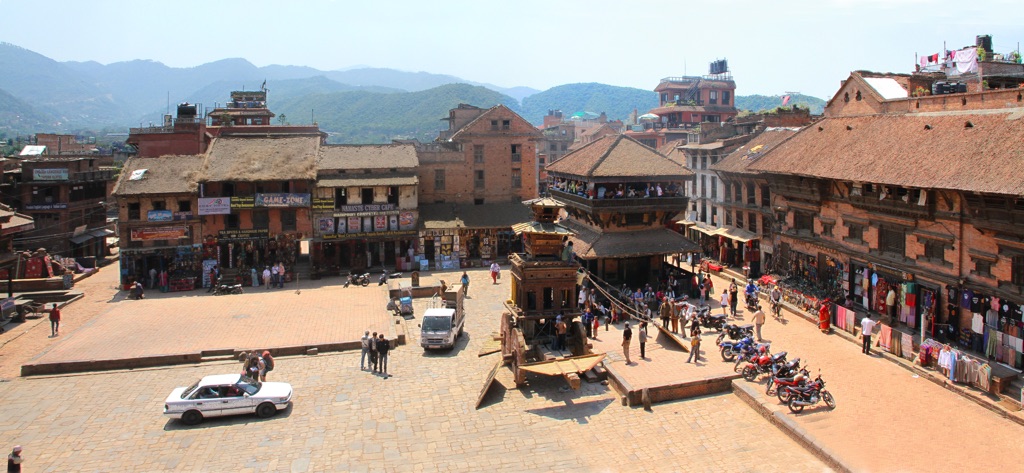
The Malla kings, who were great patrons of the arts and architecture, built many of the square’s structures. The Nyatapola Temple was built by King Bhupatindra Malla, a testament to his devotion and the architectural prowess of the Newari craftsmen. The square has also been inhabited by generations of Newars, who have maintained the cultural and religious practices associated with the square.
Bhaktapur Taumadhi Square has been the scene of significant historical events. It has hosted royal ceremonies and public festivals, such as the Bisket Jatra, an annual event that marks the Nepali New Year. The square has also been a place of trade and social gatherings, contributing to the economic and social fabric of Bhaktapur.
Despite the damage from earthquakes, the square has been resilient. Restoration efforts have preserved its historical and cultural integrity. The community’s commitment to its upkeep ensures that Bhaktapur Taumadhi Square remains a vibrant part of Nepal’s heritage.
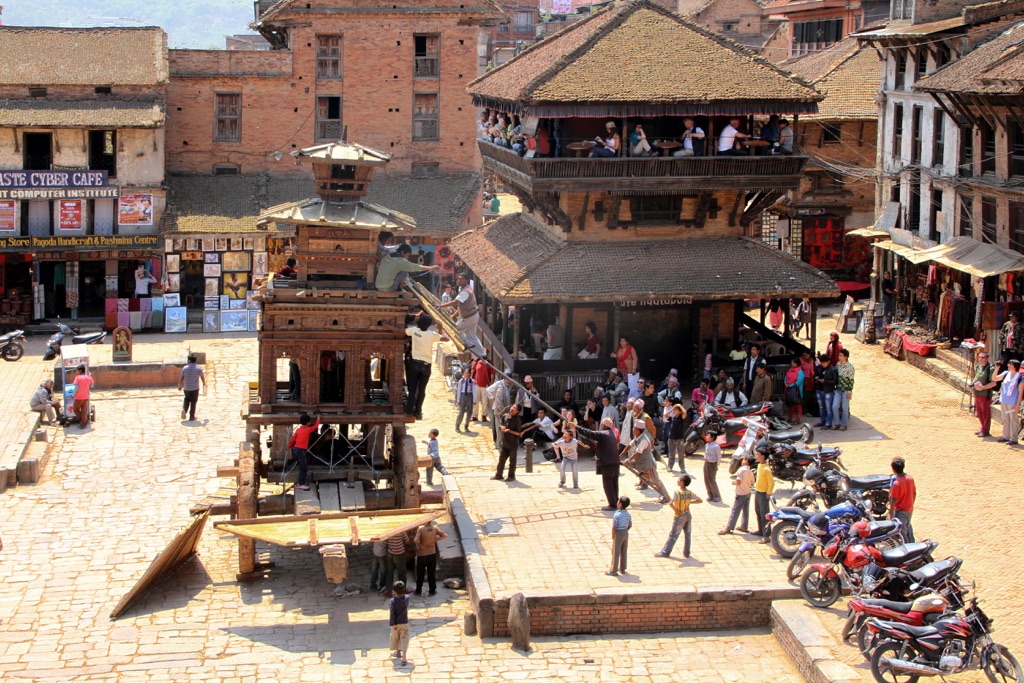
About Bhaktapur Taumadhi Square
Bhaktapur Taumadhi Square is a treasure trove of Newari architecture. The square’s layout reflects the traditional planning of Nepali cities, with temples and buildings surrounding a central open space. The Nyatapola Temple, dedicated to the goddess Siddhi Lakshmi, is a five-story edifice that exemplifies the pagoda style. It is renowned for its structural strength and intricate wood carvings.
The square’s buildings are made from brick and wood, materials that are abundant in the Kathmandu Valley. The use of locally sourced materials and traditional construction techniques has contributed to the square’s resilience. The Bhairabnath Temple, another key structure in the square, is dedicated to Bhairava, a fierce manifestation of Shiva. It showcases the tall, tiered roofing characteristic of Newari religious buildings.
The architectural highlights of Bhaktapur Taumadhi Square include the finely detailed woodwork and the ornate stone carvings that adorn the temples. The Nyatapola Temple’s stairway is flanked by statues of mythical beasts and powerful figures, each one a masterpiece of Newari craftsmanship. The square’s layout facilitates community gatherings and religious processions, emphasizing its role as a social and cultural hub.
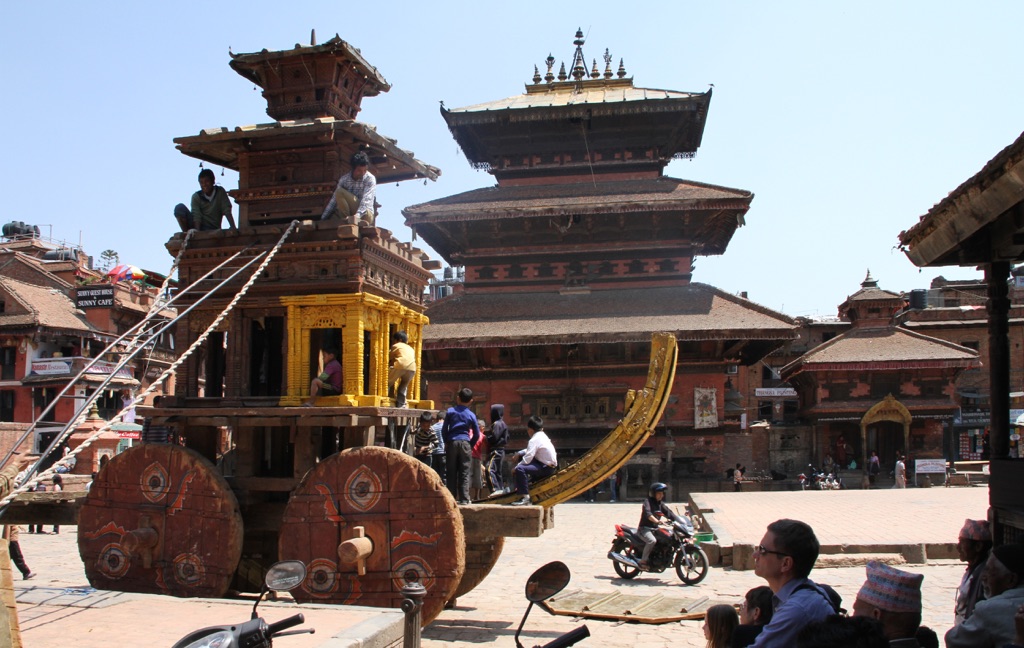
The methods of construction reflect the ingenuity of Newari architects. They designed structures to withstand earthquakes, a common threat in the region. The interlocking of bricks and the use of wooden struts and ties in the temples contribute to their stability. The square’s preservation is a result of both traditional maintenance practices and modern restoration efforts.
The square is not only a historical site but also a living part of Bhaktapur. The local community uses the space for daily activities, and the temples are active places of worship. The blend of the sacred and the mundane gives Bhaktapur Taumadhi Square a unique atmosphere, where ancient traditions continue to thrive in the modern world.
Theories and Interpretations
Several theories surround Bhaktapur Taumadhi Square, particularly regarding the symbolism of its temples. The Nyatapola Temple’s five stories are said to represent the five basic elements: earth, water, fire, air, and ether. This aligns with Hindu and Buddhist cosmology, suggesting a deeper spiritual significance to its design.
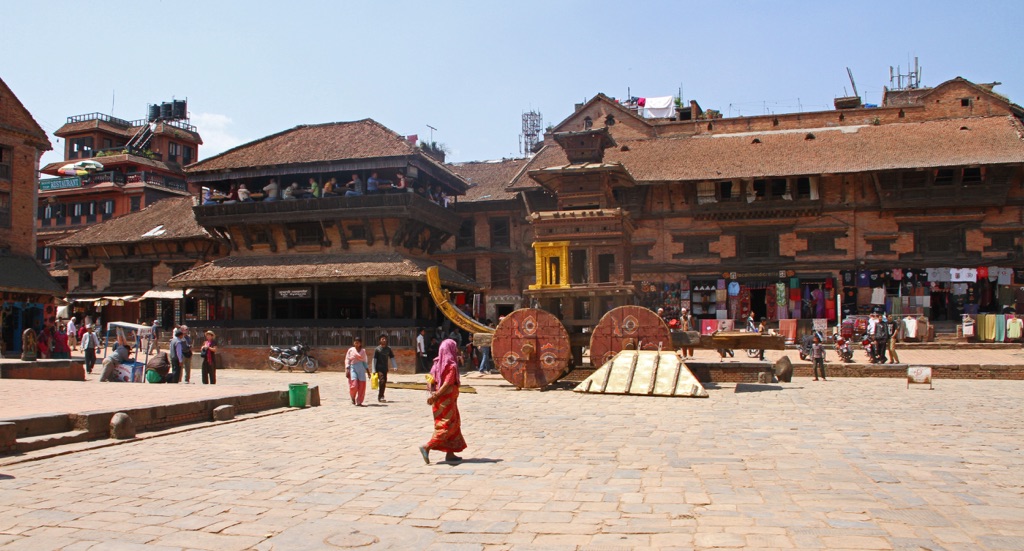
The purpose of Bhaktapur Taumadhi Square has been interpreted as both a civic and religious space. It has served as a marketplace and a ground for festivals, reflecting its multifaceted role in the community. The square’s temples have been places of worship and pilgrimage, indicating their religious importance.
Mysteries about the square often relate to the origins of certain architectural features. For example, the exact significance of the statues guarding the Nyatapola Temple’s stairs is subject to speculation. Some believe they represent various powers protecting the deity within, while others see them as historical figures.
Historical records and oral traditions have been used to interpret the square’s past. These accounts provide insights into the Malla kings’ intentions and the artisans’ techniques. Dating of the square and its structures has been carried out using architectural styles, inscriptions, and historical documents, which help to place them within a specific time frame.
The dating methods include carbon dating of organic materials and dendrochronology, which analyzes tree rings in the wooden structures. These scientific approaches complement the historical analysis, providing a more comprehensive understanding of the square’s age and evolution.
At a glance
Country: Nepal
Civilization: Newari
Age: 12th century onwards
Conclusion and Sources
This article was created using information from reputable sources to ensure accuracy and reliability. The sources include:

